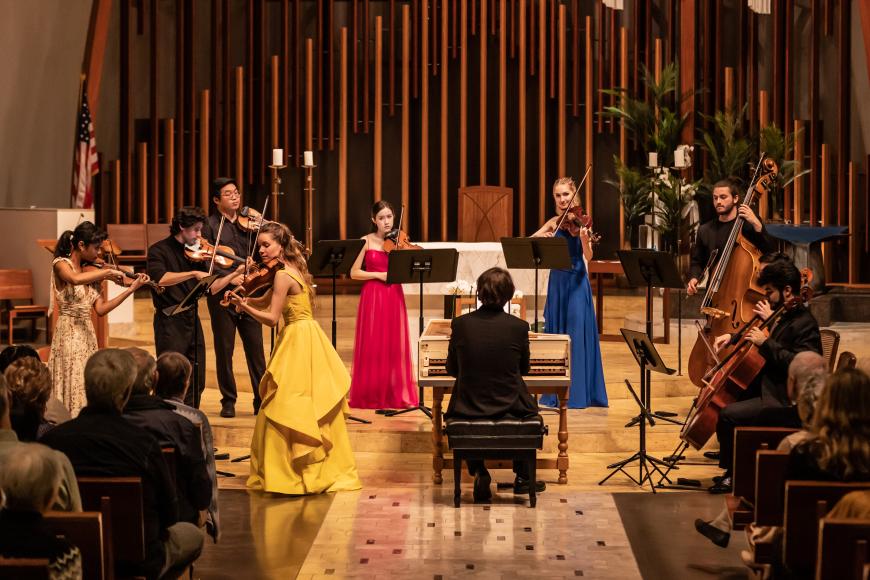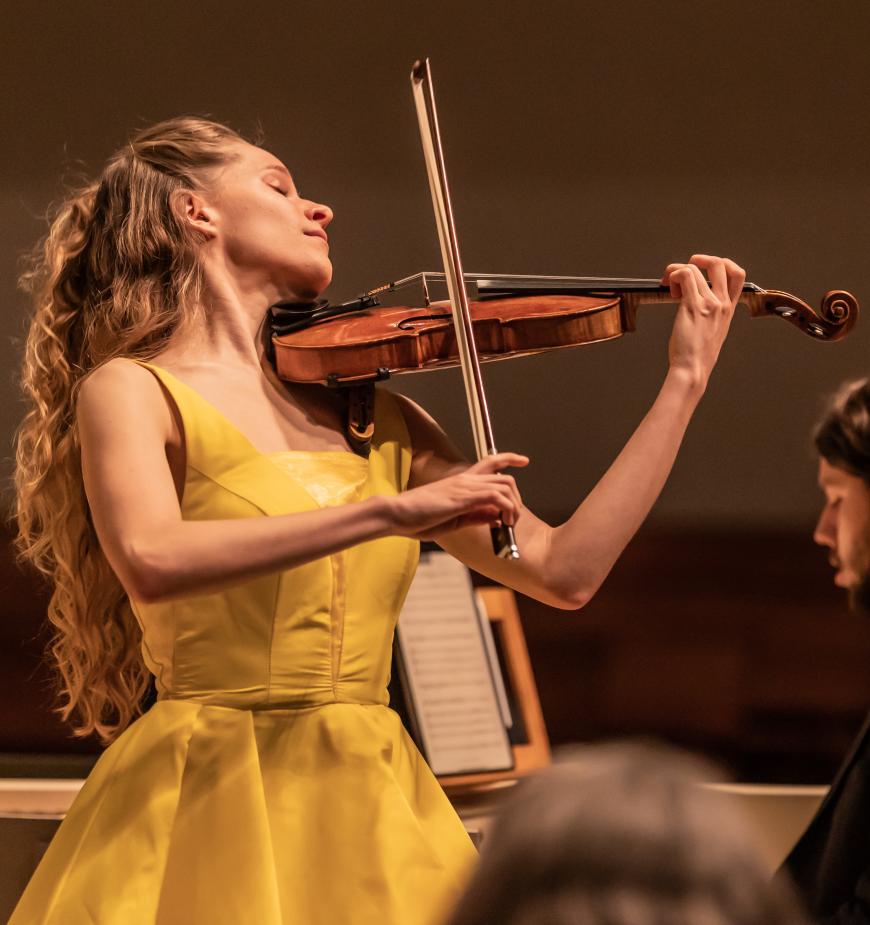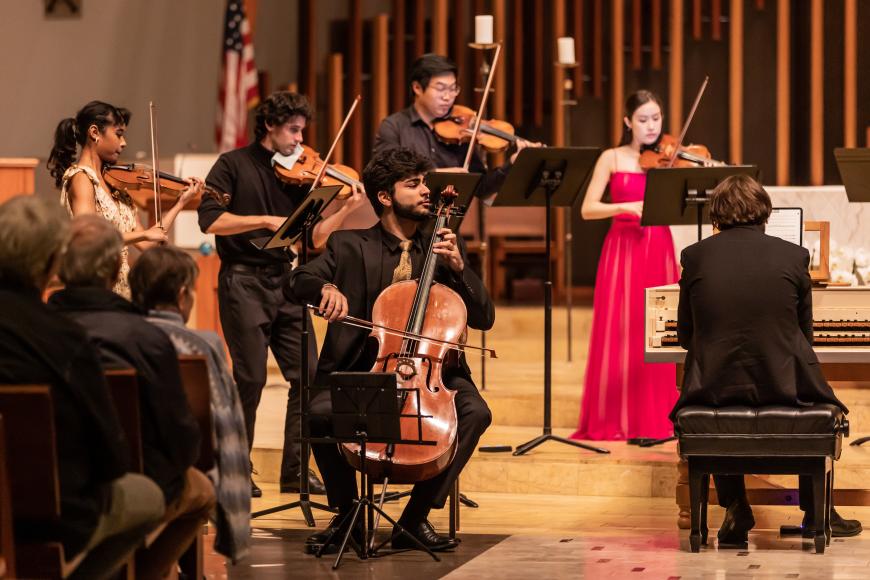
There was something very strange about Friday night’s Kontrapunktus concert at the El Camino College Campus Theatre in Torrance. Despite an interesting premise, exploring the music of Carl Philipp Emanuel Bach, and elite players, the production fell short of its hyperbolic promises of “sublime artistry” that “leaves an indelible impression.”
I do not blame the players, who were excellent (and young: All were under age 25, the youngest 17). The program was packed, containing five technically demanding multi-movement works, and with only nine people in the core chamber orchestra, there was little room for individual error. Everyone was dialed in. The orchestra executed nimble passagework, held itself (mostly) together without a conductor, and achieved beautiful moments, particularly in the slow movements of the harpsichord and cello concertos. But the performance felt studious and effortful, never fully transcending to a level of true ease and confidence.
Turns out, the ensemble, in its current form, hasn’t been playing together very long.
Kontrapunktus is the brainchild of writer, artist, and self-described impresario Raymond Jacobs, who currently serves as the group’s executive director. What started as a plan to commission neo-Baroque music to use in his audiobook turned into a dream of forming a group that would bring Baroque music to the stage in L.A. Jacobs established Kontrapunktus in 2015 and began hiring players in 2017; since then, the orchestra has undergone numerous personnel changes. No one in the current iteration of Kontrapunktus has been around for more than two years, which I suspect contributes to the ensemble’s underdeveloped voice.

While Jacobs declares that his ensemble “redefines conventions” and uniquely appeals to younger audiences and classical newbies, it doesn’t, yet. Friday night’s audience included sponsors, city council members, and even the mayor of Torrance; notably missing was a substantial contingent of young people.
The flute-turned-violin concerto (in D minor, H.484.1/Wq. 22) was a highlight of the program. Violin soloist Aubree Oliverson transcribed the flute part herself and played it from memory, her focused tone projecting well, even in the dry theater. The energetic last movement frothed to a moody finish, coordinated nicely between soloist and orchestra, that got the audience on its feet with applause.
Harpsichordist Gabriel Crist was the rock of the show, and I was glad that he got a break from outlining bass lines and harmonies as a continuo player to extend himself in the Harpsichord Concerto in E Minor, H.418/Wq. 15. I cheered from my seat when Crist whipped through those whirlwind scales in the first movement and wished that I could have heard him better. As the only period instrument onstage, the harpsichord should have been miked. The string players tried to keep their volume down but sounded stifled in doing so, as modern string instruments are naturally louder and brighter than their Baroque predecessors. For an ensemble that focuses on Baroque music, the improper balance of the harpsichord was a big oversight — luckily, one that can be easily remedied.
Before the last piece, Jacobs introduced each member of the orchestra, emphasizing their institutional pedigrees and even name-dropping some of their teachers. He should have mentioned, instead, that soloists Osheen Manukyan (in the Cello Concerto No. 3 in A Major, H. 439/Wq.172) and Oliverson wrote their own cadenzas for the concertos they performed. Manukyan (who serves as co-artistic director with concertmaster Hannah White) also adapted and arranged the Trio Sonata in A Minor, H.572/Wq.148 for the group.

In a concert solely dedicated to C.P.E. Bach, I expected to learn something new about the composer, who newbie audience members may know only as J.S. Bach’s son. Aside from a cursory introduction to the composer at the beginning of the concert and in the program notes, no context was provided about the individual pieces, which spanned a significant 45 years (1735–1780) of C.P.E. Bach’s career. It was a missed opportunity to highlight the composer’s evolution as one of the key figures bridging the Baroque and Classical eras.
If putting on an all-C.P.E. Bach concert is such a significant act (and many early-music groups elsewhere, if not in L.A., have done so), why not make more of an effort to bring the audience on board? The music doesn’t speak for itself, especially when you’re trying to invite new listeners into the classical fold.
The misalignment between Jacobs’s claims and the actual concert left an unsettling impression. With such splendid players who, in their short time together, have already shown such creative initiative, it doesn’t have to be this way. Let the young players lead, speak for themselves at the shows, and try out some of their “different takes” on classical music. I’m rooting for them.

